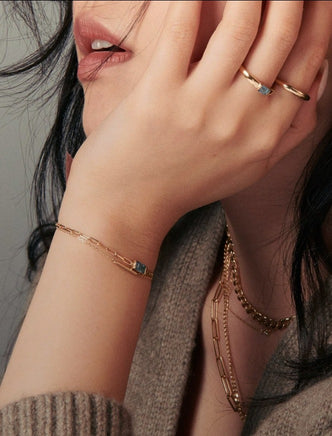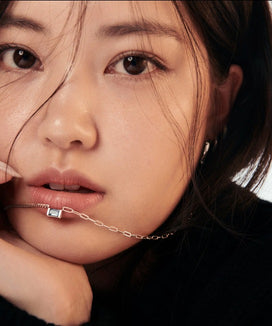Welcome to our store
1. Rings
Rings are a classic jewelry item worn for various occasions, from engagements to anniversaries. Some popular styles include:
- Engagement Rings: Symbolize a promise of marriage, with the most popular being the solitaire engagement ring, featuring a single diamond or lab-grown diamond.
- Promise Rings: A token of commitment between partners, often used to signify a serious relationship.
- Diamond Rings: Perfect for special occasions like anniversaries, offering brilliance and timeless elegance.
- Gold Rings: Available in rose gold, yellow gold, or white gold, these are versatile options for any wardrobe.
- Gemstone Rings: Often adorned with birthstones or other colored gems, gemstone rings offer a personalized touch.
- Fashion Rings: Statement or cocktail rings that make a bold impression.
- Stackable Rings: These can be mixed and matched to create a trendy, personalized look.
2. Necklaces
Necklaces are a staple in many jewelry collections, offering versatility and a way to express personal style. Types include:
- Gold Necklaces: A timeless classic, perfect for both formal and casual occasions.
- Birthstone Necklaces: Featuring gemstones representing each month of the year.
- Pendant Necklaces: Ideal for adding a personal touch, featuring a charm or gemstone.
- Choker Necklaces: Shorter necklaces that sit close to the neck, often seen in trendy jewelry styles.
- Layered Necklaces: Multiple strands worn together to create a sophisticated look.
- Statement Necklaces: Bold and eye-catching, perfect for making a fashion-forward statement.
3. Earrings
Earrings can transform your look instantly. Some popular styles include:
- Stud Earrings: Simple and elegant, featuring a single stone or metal.
- Hoop Earrings: A circular design, available in a range of sizes.
- Dangle Earrings: These earrings hang below the earlobe and often feature gems or intricate designs.
- Gold Earrings: A classic choice, often used in both casual and formal wear.
- Gemstone Earrings: Featuring beautiful colored stones, perfect for adding a pop of color.
4. Bracelets
Bracelets are a versatile accessory, perfect for both stacking and wearing alone. Popular types include:
- Bangle Bracelets: A rigid bracelet worn loosely on the wrist.
- Gold Bracelets: Timeless and elegant, available in various designs.
- Cuff Bracelets: Wide bracelets that can be adjusted to fit snugly on the wrist.
- Gemstone Bracelets: Featuring colored stones for a personal touch.
5. Wedding Jewelry
Wedding bands, rings for couples, and other wedding jewelry pieces symbolize love and commitment. These items are crafted to last a lifetime, often featuring gold, diamonds, and other precious materials.
1. Prong Setting
This is the most traditional and popular setting for engagement rings and other diamond jewelry. It involves small metal prongs that hold the gemstone in place, allowing maximum light to pass through the diamond, enhancing its brilliance.
2. Bezel Setting
In a bezel setting, the gemstone is encased in a thin metal rim, providing more security than a prong setting. This setting is ideal for contemporary jewelry designs and those with an active lifestyle who want extra protection for their gemstones.
3. Pavé Setting
Tiny diamonds or gemstones are set closely together in this setting, creating a continuous sparkling surface. This is a popular choice for luxury jewelry, especially in wedding bands and diamond rings.
4. Channel Setting
In a channel setting, diamonds or gemstones are set between two parallel metal bars. This setting is most commonly used in rings for women, particularly in stackable rings and wedding bands.
5. Tension Setting
A tension setting uses the pressure of the metal band to hold the gemstone in place. The gemstone appears as if it is floating, giving the piece a modern, elegant look.
6. Halo Setting
The halo setting features a central gemstone encircled by smaller diamonds or gemstones, making the central stone appear larger and more brilliant. This setting is popular in engagement rings and statement rings.
1. Gold Jewelry
- Cleaning: Clean gold jewelry using warm water, mild soap, and a soft cloth. Avoid using harsh chemicals.
- Storage: Store gold jewelry in a soft pouch or a lined jewelry box to avoid scratches.
- Care Tip: Avoid wearing gold jewelry while swimming, as chlorine can weaken the metal.
2. Silver Jewelry
- Cleaning: Silver jewelry is prone to tarnishing. Use a silver polish or a soft cloth to clean it regularly.
- Storage: Keep silver pieces in an airtight container or anti-tarnish bags to prevent oxidation.
- Care Tip: Remove silver jewelry before washing hands or using lotions to avoid moisture build-up.
3. Gemstone Jewelry
- Cleaning: Use a mild detergent and soft brush to clean gemstone jewelry. Avoid ultrasonic cleaners, as they can damage softer stones.
- Storage: Store gemstone jewelry separately to prevent scratching and chipping.
- Care Tip: Keep gemstone jewelry away from harsh chemicals like perfumes or hairspray, which can dull the stone's brilliance.
4. Diamond Jewelry
- Cleaning: Diamonds can be cleaned with a soft toothbrush and a mixture of warm water and mild soap. For lab-grown diamond jewelry, follow the same care routine.
- Storage: Store diamond jewelry separately in soft pouches or a lined box to avoid scratches.
- Care Tip: Have your diamond jewelry inspected regularly to ensure the setting is secure.
5. Fashion Jewelry
- Cleaning: Use a damp cloth to wipe down fashion jewelry. Avoid soaking it in water as it may contain non-precious metals that can tarnish.
- Storage: Store fashion jewelry in a cool, dry place. Avoid exposure to moisture.
- Care Tip: Take off fashion jewelry before applying lotions, perfumes, or makeup to prolong its life.







